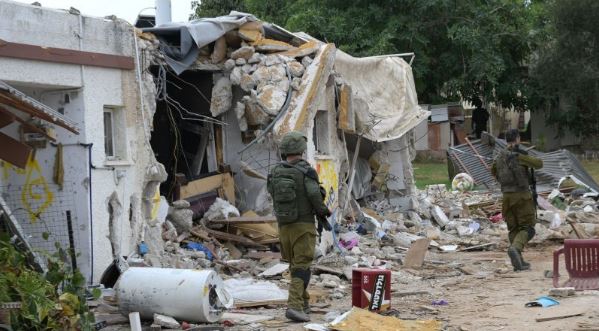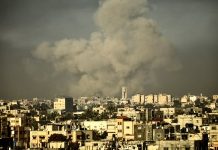
March 5 (UPI) -- A United Nations investigation found evidence that horrific sexual violence was perpetrated against the victims of the Oct. 7 terror attacks on southern Israel by Hamas and other armed groups from Gaza.
A 16-day mission to Israel and the West Bank by the Sexual Violence in Conflict office last month found reasonable grounds sexual violence occurred in multiple locations, including rape-murder and gang rape-murder and at least two cases of rape of women's corpses, the U.N. Secretary-General's SVC Special Representative said in a news release.
Many of the atrocities took place at the Nova music festival site and its surroundings, on Road 232 and at Kibbutz Re'im. In most of these incidents, victims first subjected to rape were then killed, and at least two incidents relate to the rape of women's corpses.
Supported by a team of technical experts, the group also cataloged a pattern of victims, mostly women, found fully or partially naked, bound, and shot across multiple locations.
"Although circumstantial, such a pattern may be indicative of some forms of sexual violence, including sexualized torture, cruel, inhuman and degrading treatment," said U.N. SVC Special Representative Pramila Patten.
However, In other locations such as Kibbutz Kfar Azza and Kibbutz Be'eri, the mission was either unable to verify reported incidents of rape or in the case of the latter concluded the widely reported case of a pregnant woman whose womb had reportedly been torn open, before she was killed, and her fetus stabbed while still inside her was unfounded.
While forensic analysis revealed injuries to multiple body parts, including genitalia of male and female solidiers at Nahal Oz base, the mission team was also unable establish a discernible pattern of genital mutilation.
The team, which was tasked with collecting, analyzing and verifying allegations of conflict-related sexual violence, gathered clear and convincing evidence the same sexual violence had been committed against hostages and had "reasonable grounds to believe that such violence may be ongoing against those still held."
The conclusions were reached after mission members viewed more than 5,000 photo and approximately 50 hours of footage of the attacks, conducted 34 interviews with survivors and witnesses including released hostages, first responders, health and service providers.
However, the true extent of the sexual violence perpetrated remains unknown with the team noting it knew of a small number of victims it was unable to speak with due to ongoing severe mental distress and trauma.
Patten said the situation on the ground at the time and in the aftermath had made for a series of extremely challenging circumstances ranging from the limited availability of forensic information due to casualty numbers and widely-dispersed crime scenes, prioritization of search and rescue operations as well as the recovery, identification and burial in line with religious practices over the collection of forensic evidence.
Loss of potentially critical evidence through the involvement of untrained volunteer first responders, inaccurate and unreliable forensic interpretations by non-professionals, contamination or alteration of some crime scenes and the large number of badly burned bodies also negatively impacted their work.
Patten and her team also visited the occupied West Bank -- where they met with the Palestinian Authority, civil society organizations, detainees released from Israeli prisons and other relevant actors -- but not the Gaza Strip.
Here, they heard concerns about "cruel, inhuman and degrading treatment" of Palestinians in detention, various forms of sexual violence such as invasive body searches, threats of rape, and prolonged forced nudity, as well as sexual harassment and threats of rape, during house raids and at checkpoints.






